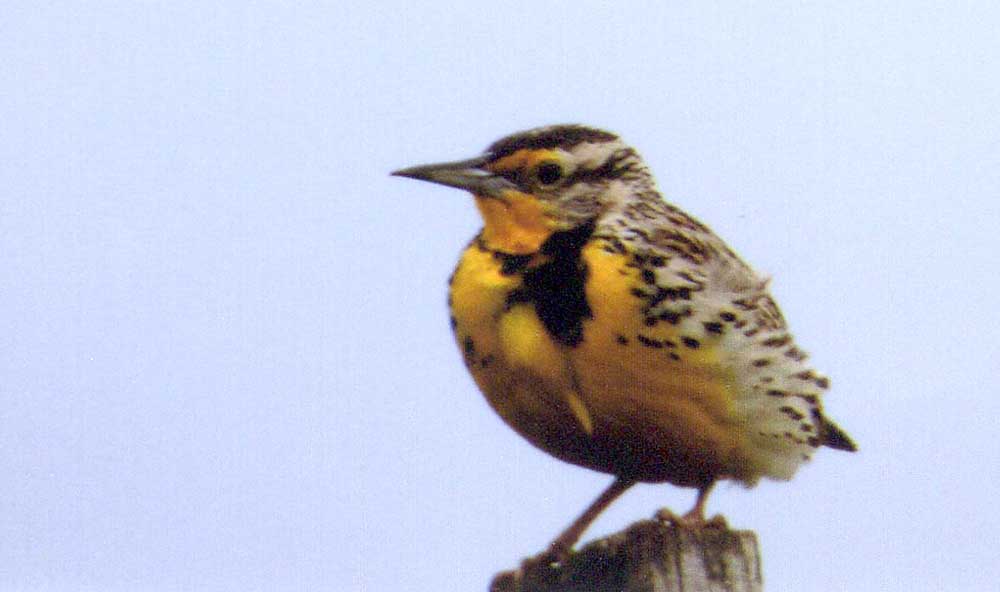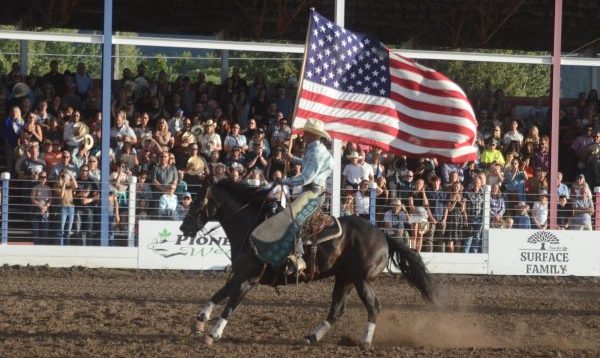Discover Wallowa County 2024: For bird-watchers, Wallowa County offers riches
Published 7:00 am Wednesday, April 3, 2024

- The western meadowlark.
Bird-watching, or birding as it is sometimes called, is a popular hobby among people of all ages and from all walks of life. It is especially popular during the summer months when many birds are active and can be seen in their natural habitat.
There may be probably no better place to see a variety of birds — from waterfowl to birds of prey — than in the Wallowa Mountains and surrounding areas.
Trending
The area that encompasses the mountains, Wallowa Lake, and the area around the two can be roughly divided into four locations for birding:
• First, there is the lake and any nearby ponds or marshes.
• Second, the mountainous area above and around the lake, including the alpine area above the Wallowa Lake Tramway.
• Outside of Joseph, Enterprise and Wallowa, many birds can be seen along the road and in the surrounding fields.
• Finally, the forested area around the state park.
But even if you can’t access any of those, there are still plenty of birding options in anyone’s backyard.
Trending
Must-haves for birding are a good pair of binoculars, a field guide to birds (“National Geographic’s Field Guide to the Birds of North America” is a comprehensive guide), a sturdy pair of shoes and a small notebook to record your sightings.
This is by no means an exhaustive list of the birds seen in each area, but it will serve as a starting point, especially for the beginning birdwatcher.
A trip to the top of Mount Howard on the tram, located at Wallowa Lake, not far from the Wallowa Lake Lodge, is an experience and will also garner some views of popular birds seen in the alpine, high-altitude area, of the Wallowa Mountains.
A first encounter once you leave the tram, may be with the Clark’s nutcracker. This is a gray and black bird, with white tail and wing feathers. It is also called a “camp robber” by some, because of its reputation for swooping down on the unsuspecting camper or picnicker and stealing whatever it can and flying off with it.
Another bird you might hear, as opposed to see due to its small size, is the mountain chickadee. It has a distinctive “chicka-dee-dee-dee” call. It is a small bird, with black and white markings, including a black mask. The Steller’s blue jay is also popular in this area. It is a dark, indigo blue, with a black head and black crest. Finally, the mountain bluebird can sometimes be seen here.
Even just driving up and down the highway and side roads you will see a variety of birds. Bald eagles and red-tailed hawks are often seen sitting on power poles or fence poles. Crows are everywhere and on a walk on a country road you may hear the call of the western meadowlark, Oregon’s state bird. It is an unmistakable, high-pitched “trill” sound. The bird has a bright yellow breast, brown-speckled wings, and a black stripe under its chin.
Walks on roads stretching off the state highway from Enterprise to Joseph, may turn up sightings of the California quail and, if you’re lucky, a ring-necked pheasant, distinguished by its green and red head, and the white ring around its neck. Empty fields and alongside the road are also popular spots for this game bird.
A walk on the Zumwalt Prairie (follow the signs south and east of Enterprise, along Highway 82 toward Joseph) might show a flock of wild turkeys. Open grassy areas, with rocky spots, are home to the skittish killdeer. The killdeer’s tone is a high-pitched, “killll-deeerrr,” repeated, as it leads any threat away from its nest, pretending to have an injured wing.
Besides Wallowa Lake, there are also ponds and marshy areas in Wallowa County where birds can be viewed. Marr Pond, located a short distance from the downtown Enterprise, is home at various times of the year to Canadian geese, mallard ducks, grebes, and swans.
In the streams and creeks that run along Highway 82, the lucky birder will see the great blue heron, patiently waiting for its dinner. This bird is distinguished by its dusky, blue gray color, feathered crest, long legs, and long pointed bill perfect for spearing its dinner. Some say, to see a great blue heron is a sign of good luck. And that blue bird, with the blue crest, white and rust-colored markings, sitting on the power line? That is a belted kingfisher. Other birds easily spotted from a passing car include red-winged blackbirds, clinging to cattail stalks.
Some common birds seen in the forest at the lake include red-shafted flickers and downy woodpeckers. Other birds common to the Wallowa area are black-billed magpies, crows, starlings, ospreys, juncos, sparrows, hummingbirds, mourning doves, robins, great horned owls, and goldfinches.
The website www.ebird.org lists more than 275 different birds that have been seen in and around the Wallowa County area. Some require a day trip to such places as Hat Point Overlook, which includes a scenic ride and a view of the Snake River Canyon.
How many birds will you see on your next trip to Wallowa County?









